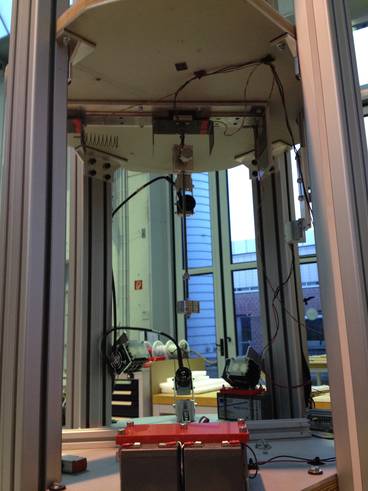Stabilizing the Electrodynamic Tether by Using Tilger (DropTES 2014)

research area: fundamental physics
experiment title:
Stabilizing the Electrodynamic Tether by Using Tilger
experiment acronym: DropTES
funding agency:
United Nations / DLR / ZARM
grant number:
DropTES - Program
performing organization:
German Jordanian University, Madaba, Jordan
prime investigator:
Prof. Nabil Ayoub
(Farah Atour, Ghaith Al Shishani, Hisham Maher)
experiment objective
abstract
An electrodynamic tether (EDT) is a simple idea, but one with an amazing number of uses. Electrodynamic tether is a long conductor wire that is attached to the satellite, which can act as a generator or motor, from its motion through the earth's magnetic field. And it has the potential to make space travel significantly cheaper The lack of EDT’s widespread in common applications can be attributed to its greatest disadvantage, namely causing imbalances to orbiting payloads which analytically appears as a consequent of the action of undesired degrees of freedom made available by the system and triggered in motion across the dynamic path. As design requirements are generally made to move with stability and preserve a preset dynamic model the discussed disadvantage could be resolved by means of balancing the EDT kinematic characteristics to achieve the favored force balances and equilibriums. In this thesis, we discuss the experimental outcomes of utilizing a tuned mass damper model (Tilger) or “Schwingungstilger” (Deutsch), and its benefit in "eliminating" tether liberations in aims of theoretically stabilizing payload orbit transfers.
experiment campaigns
experiment year: 2014
number of drops: 4


 "
"